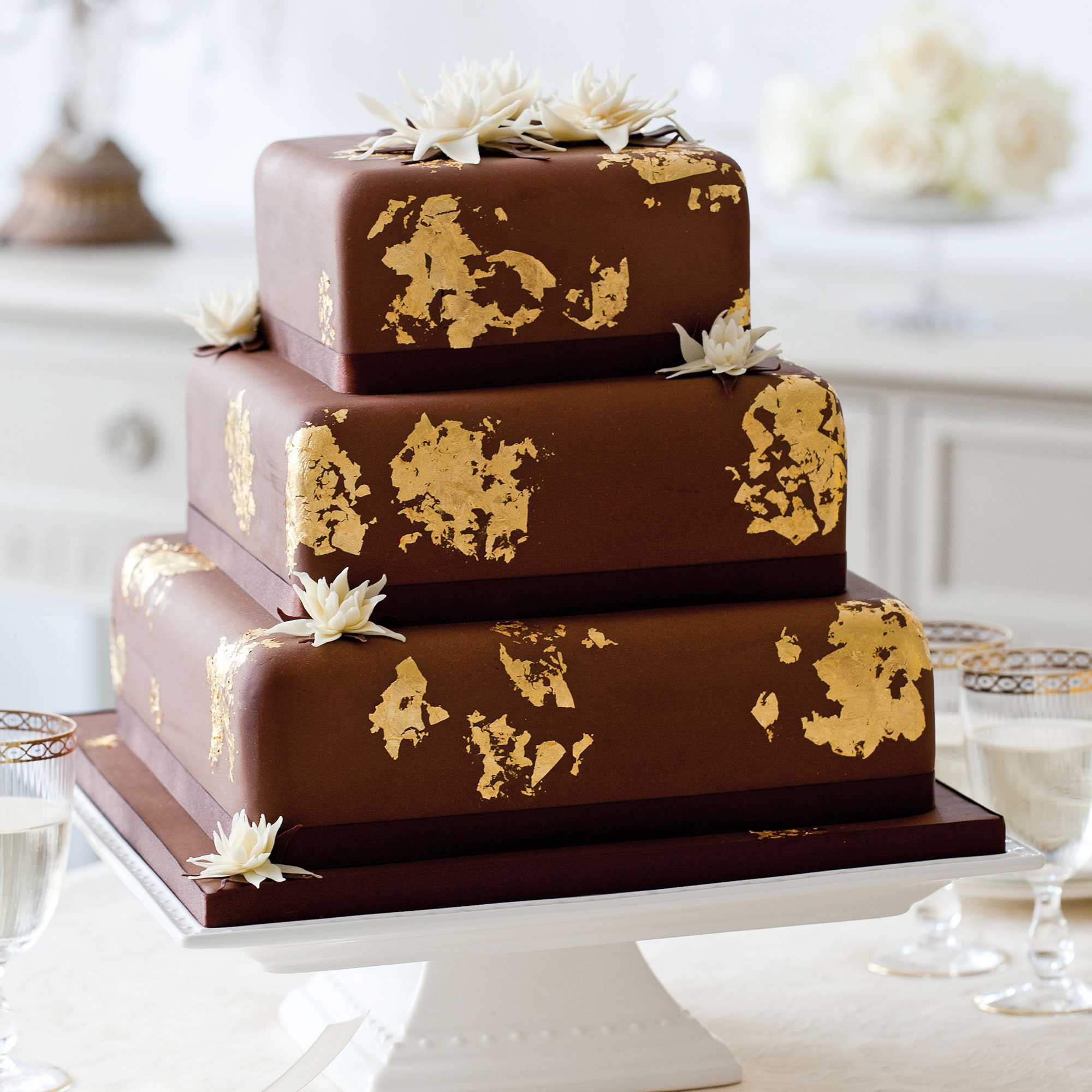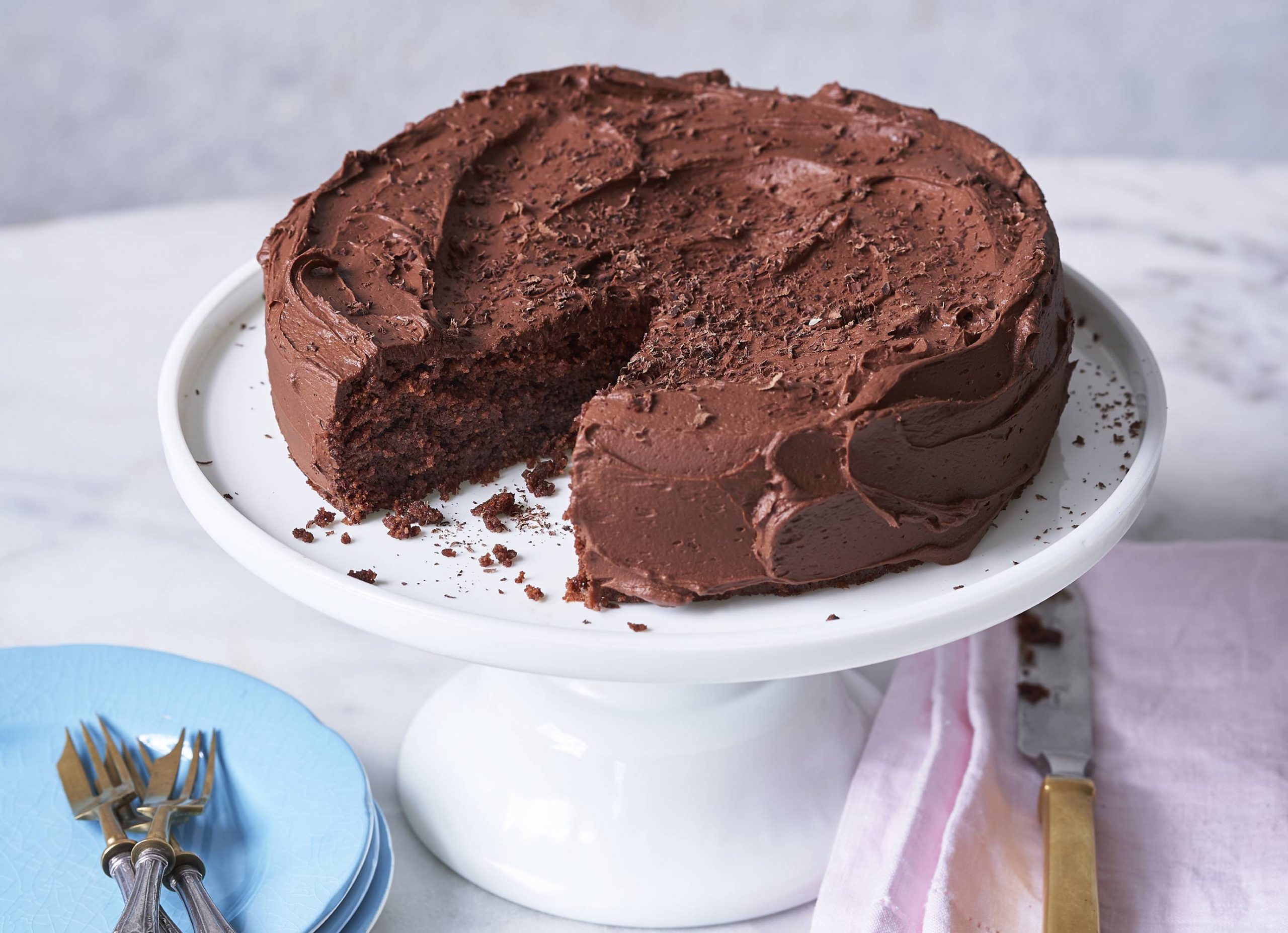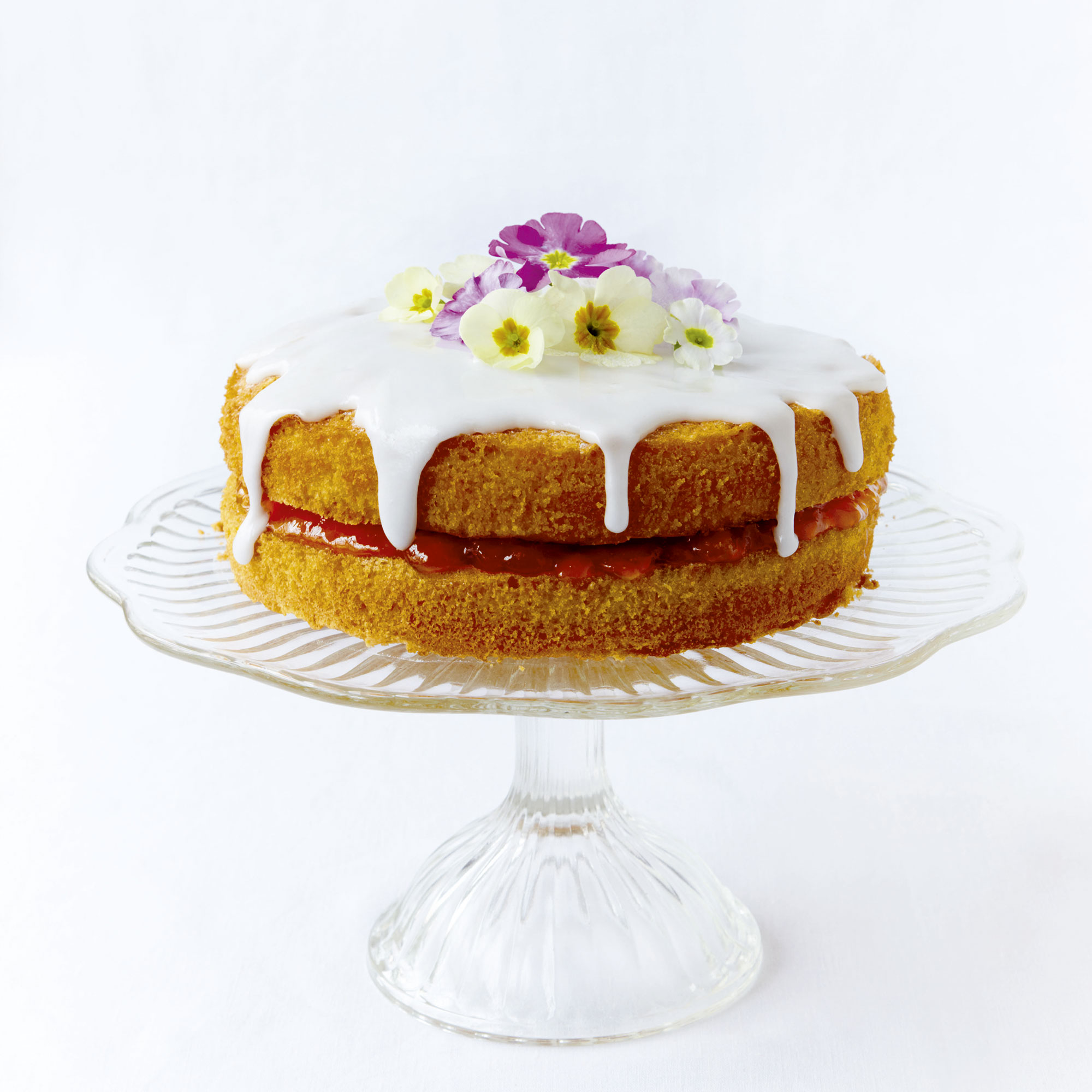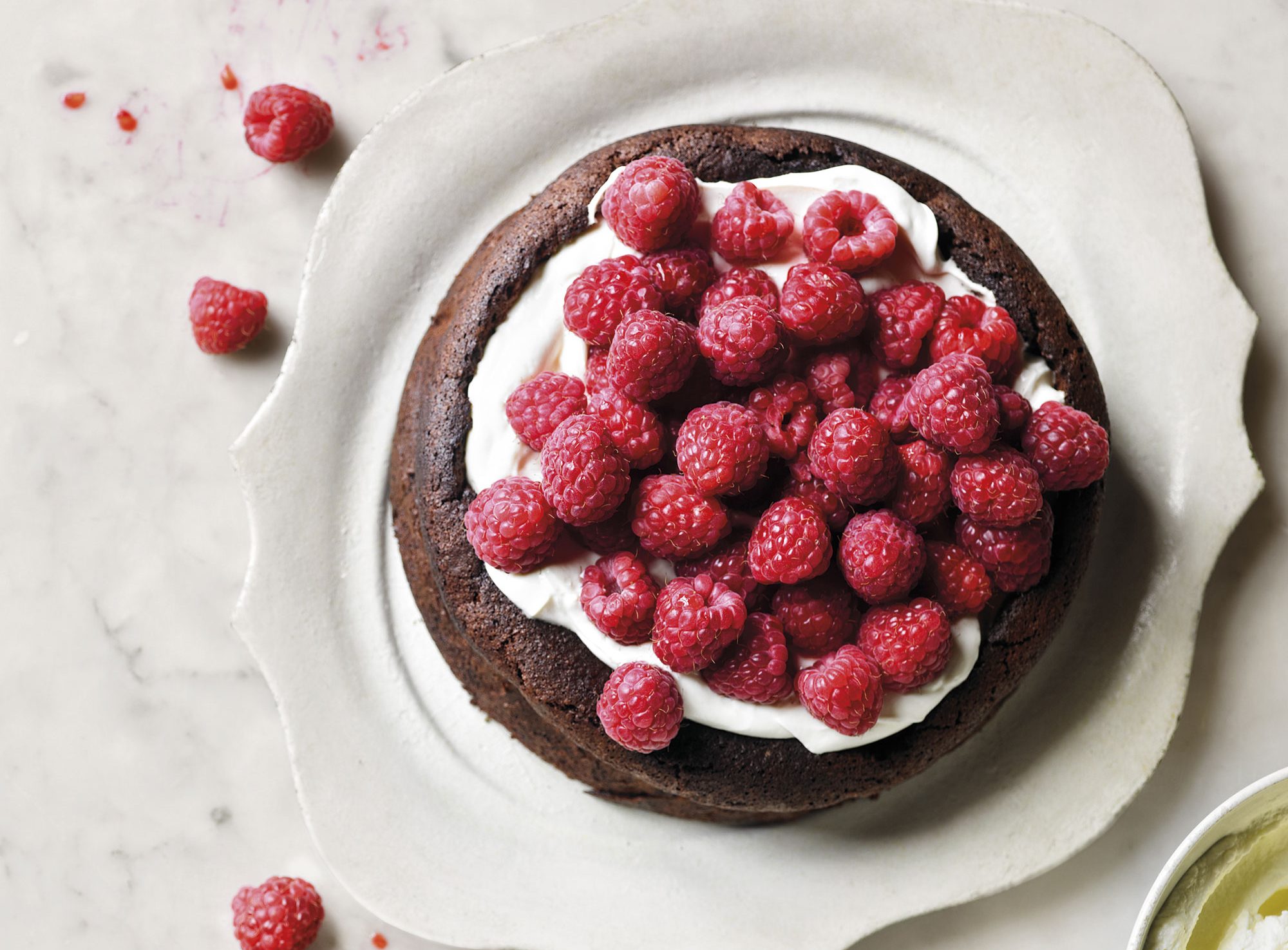Ingredients
To make a 20-cmx8-inch cake:
- 8 large eggs, separated, plus 2 whole eggs
- ¼ teaspoon salt
- 400 g/2 cups packed dark muscovado sugar
- 250 g/2½ cups ground almonds
- 400 g/14 oz. good quality (70% cocoa solids) dark chocolate, melted and cooled
- 1½ tablespoons dark rum
For the whipped rum ganache
:
- 150 g/5½ oz. good quality (70% cocoa solids) dark chocolate, broken into pieces
- 150 ml/²⁄3 cup single cream
- ¼ teaspoon salt
- 75 g/5 tablespoons unsalted butter, softened
- 100 g/¾ cup icing sugar
- 3 tablespoons dark rum, or to taste
To decorate:
- Dark Modelling Chocolate (see page 23 of Victoria's book for recipe), plus a little extra for the lotus bases
- a splash of dark rum
- a cake drum 8 cm/3 inches larger than the base tier
- 1.5-cm/¾-inch wide chocolate-brown satin ribbon
- approx. 300 g/10½ oz. White Modelling Chocolate (see the book)
- icing/confectioners’ sugar, for dusting
- 1 quantity Royal Icing
- clear alcohol (such as vodka)
- 5–10 x 8-cm/3-inch square sheets of edible gold leaf
You will also need:
- 2 x 20-cm/8-inch shallow square cake pans, greased and lined
- a thin square cake board the same size as the cake
- small, medium and large calyx cutters
- a ball tool
- a folding flower tray
- an 8-cm/3-inch 5-pointed star cutter
- a foam flower former
- a piping bag fitted with
- a small round nozzle
- a paintbrush
- a clean, dry brush
Method
- To make the rum cake preheat the oven to 170°C (150°C fan)/325°F (300°F fan)/Gas 3 In a large, spotlessly clean bowl, whisk the egg whites with the salt until they form stiff peaks. Set aside until needed In a large mixing bowl, whisk together the egg yolks, whole eggs and sugar to the ribbon stage – the mixture should be pale and mousse-like and leave a slowly disappearing ribbon on the surfaceof the mixture when the excess drips into the bowl from the beaters. This process will take a good few minutes with an electric whisk, so be patient Fold in the ground almonds, followed by the melted and cooled chocolate, being careful not to knock out any air from the mixture Finally, with a large metal spoon, fold the beaten egg whites into the batter. Be firm but gentle and don’t over-mix the batter or you’ll knock out the air in the cake – vital for both the correct texture and also the height of the cakes Pour the batter into your prepared cake pans and pop them in the preheated oven to bake for about 30–35 minutes, or until an inserted skewer comes out clean Once baked, place the warm cakes, still in their pans, on a wire rack and stab them all over with a skewer. Drizzle the dark rum over the cakes, then leave to cool in the pans before turning out
- To make the whipped rum ganache, put the chocolate in a heatproof bowl and pour the cream into a small saucepan set over a gentle heat. Once the cream scalds, pour it over the chocolate and leave for a minute before stirring in with a rubber spatula until all the chocolate has melted. Stir in the salt, then leave to cool Whisk the butter until soft, then sift over half of the icing sugar and whisk again until well combined. Sift over the remaining icing sugar and again, whisk thoroughly, then add the rum and whisk a final time Pour the cooled chocolate mixture over the rum buttercream and whisk until well combined. Taste for rum, adding a little more if you want to, but not too much, or the filling may not set properly. Pop the filling in the fridge for an hour to set, but whisk it again before using
- Level the cakes, if necessary, then attach one of the cakes to the cake board with a small blob of ganache. Sandwich the cakes together with half of the ganache, then spread the remaining ganache over the top and sides of the cake with a palette knife and leave to set.
- To decorate cover your 3 cake tiers and the cake drum with modelling chocolate, brushing the cakes with a little dark rum first to help it stick (modelling chocolate can be used to cover cakes in the same way as sugar paste – refer to pages 26 and 28–30 of Victoria's book for full instructions) Rod and stack the cake, then ribbon the cake and the cake drum To make a large lotus flower for the top of the cake, knead a piece of white modelling chocolate until pliable and roll it out on a surface dusted with icing/confectioners’ sugar. Stamp out 2 calyxs from each size cutter. Use a ball tool to roll from the centre of each calyx out to the edge, to shape the petals and make them more delicate. Use your finger and thumb to pinch the ends to keep the lotus petals pointed Place the 6 calyxs in the small holes of a folding flower tray. Using a ball tool, gently press in the centre of 1 large, 1 medium and 1 small calyx to raise their petals, so they set fairly upright. Leave the remaining 3 calyxs to set as they are, so their petal edges set at a lower angle Using the star cutter, stamp out 2 stars from the rolled-out white chocolate. With the ball tool, roll from their centres out, ensuring, again, that the tips of the stars remain pointed. Leave them in a foam flower former to set Repeat steps 3–5 twice more, so you have petals for 3 large lotus flowers for the top of the cake For a small flower for the side of the cake, follow step 3, but cut out 3 medium and 3 small calyxs. Place them in the folding flower tray and use the ball tool to shape them so that the petals of each size calyx dry at 3 slightly different angles, which will allow them to be stacked Repeating step 7, prepare enough calyxs for 7–8 small flowers for the sides of the cake. (You could also make a few extra in case any petals break off as you are assembling the flowers!) Once all the petal pieces have set, you can start to stack them to create the flowers. Spoon the royal icing into the piping bag For a large flower, take one of the stars from the flower former and pipe a blob of icing in the centre, then set a second star on top so that the points fall between those of the first. Continue to stack the flower, adding the calyxs in descending size order, with the calyx with the less-upright petals first, affixing each one with a blob of icing. When the last calyx has been added, press down in the centre of the flower with a ball tool to ensure they are firmly secured, then leave to set. Repeat for the remaining large flowers Repeat step 10 to make the small flowers, starting with the medium calyx with the least- upright petals first. When all the petals are stacked, press down with a ball tool to secure firmly. Repeat until you have constructed all of the lotus flowers Next, gild the cake. Before you start, close the windows and/or turn off any fans as you need a still atmosphere to create the best results. Using the paintbrush dipped in alcohol, gently dampen the area of the cake you want to gild
-
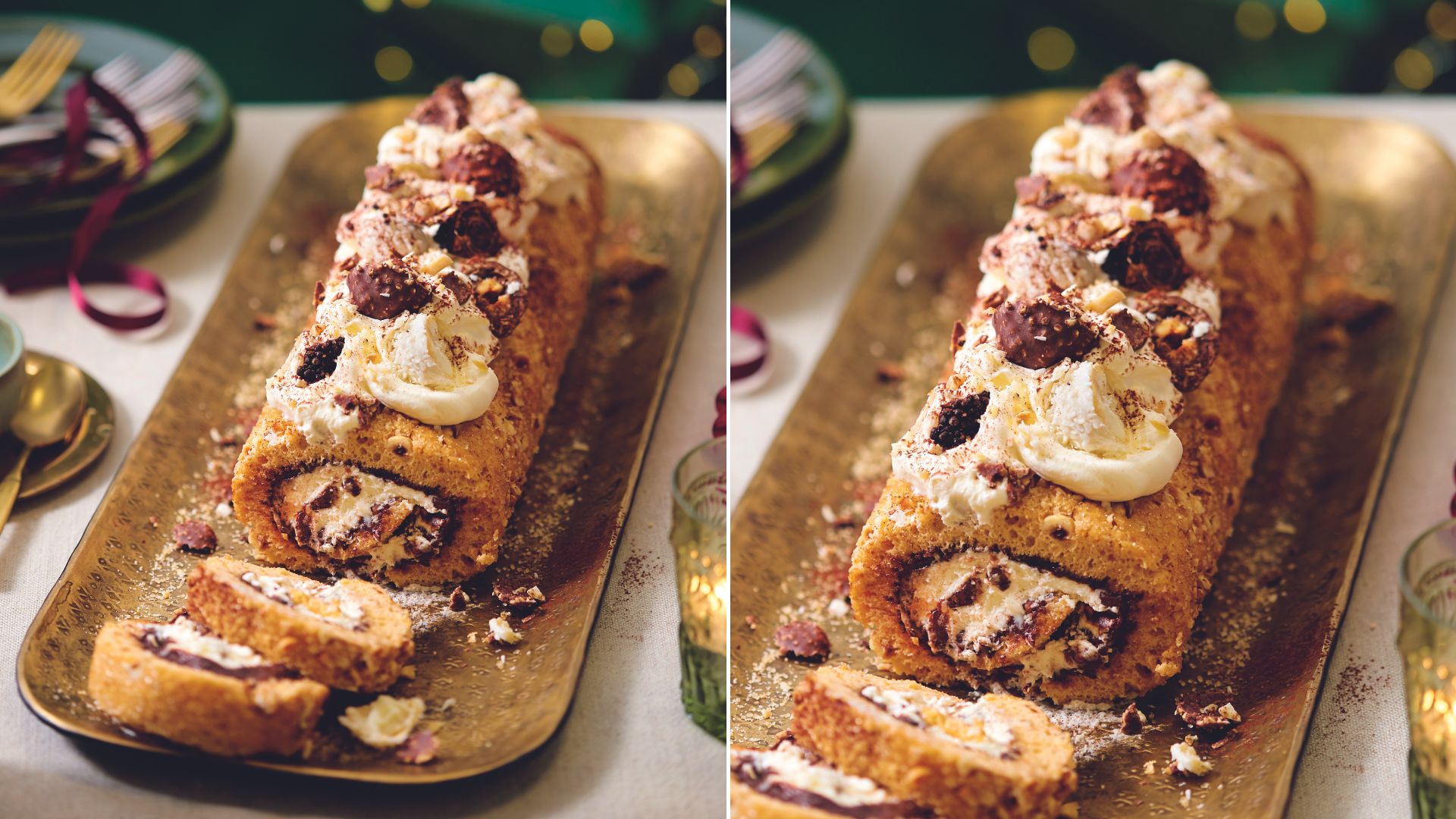 Chocolate and hazelnut roulade
Chocolate and hazelnut rouladeThis chocolate and hazelnut roulade comes with an optional Baileys Irish cream liqueur filling for an extra, festive twist
By Jen Bedloe Published
-
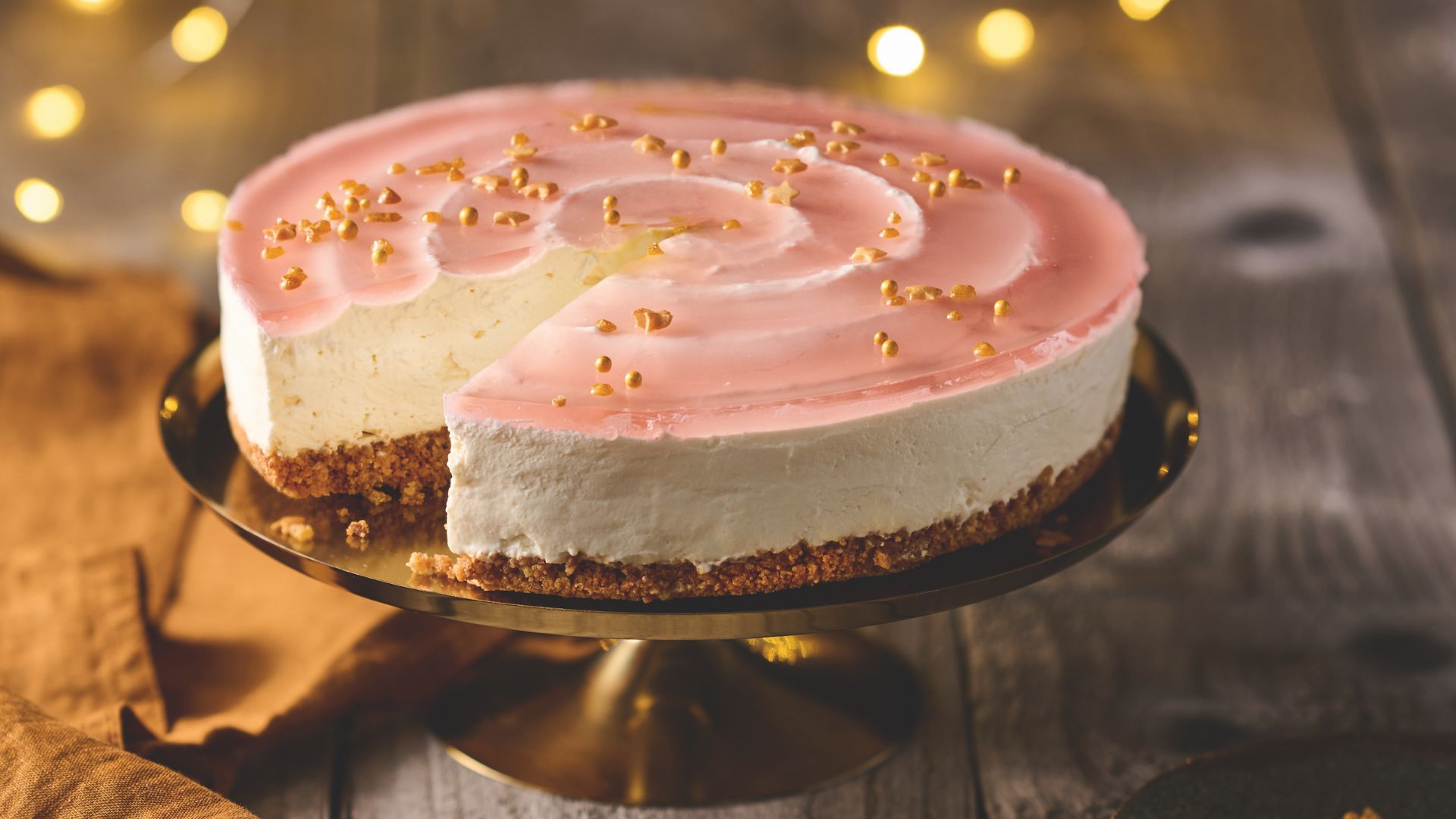 Baileys Cheesecake
Baileys CheesecakeThis no-bake Baileys cheesecake is so easy to make and perfect for cream liqueur lovers, plus it takes just 40 minutes to prepare
By Jess Meyer Published
-
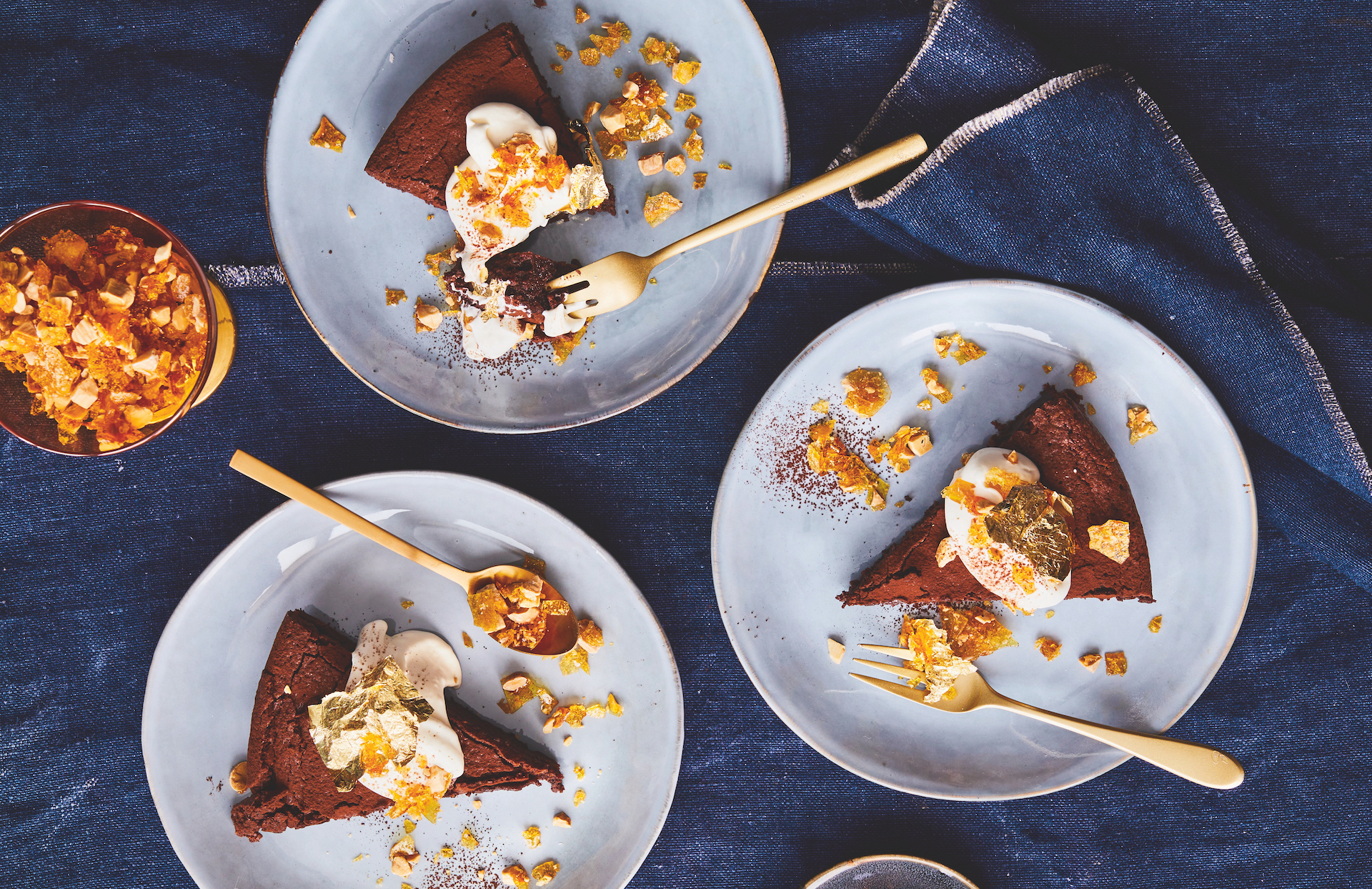 Chocolate torte with Baileys cream and salted praline
Chocolate torte with Baileys cream and salted pralineServe this rich Chocolate torte with Baileys cream and salted praline for a festive dessert that makes a popular alternative to Christmas pudding
By Jen Bedloe Published
-
 Carey Mulligan hailed as 'an icon' after incredible Jaffa Cake moment
Carey Mulligan hailed as 'an icon' after incredible Jaffa Cake momentIt's clear Carey Mulligan appreciates the importance of good snacks
By Lauren Hughes Published
-
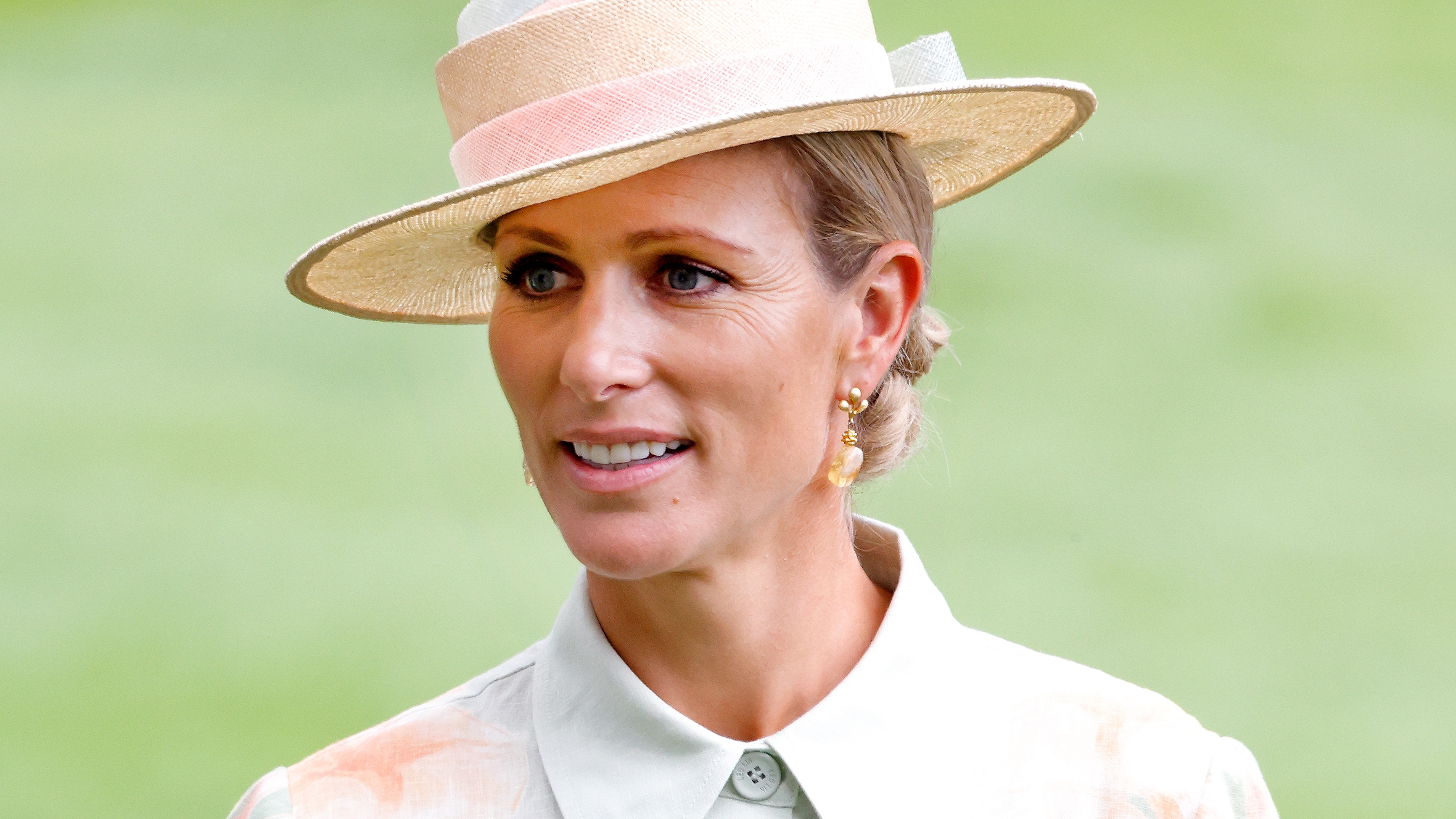 Zara Tindall's clever heel trick is an affordable wedding season saviour
Zara Tindall's clever heel trick is an affordable wedding season saviourWearing high heels isn’t for the faint hearted but Zara Tindall’s clever trick is an inexpensive way to make wedding season that bit easier.
By Emma Shacklock Published
-
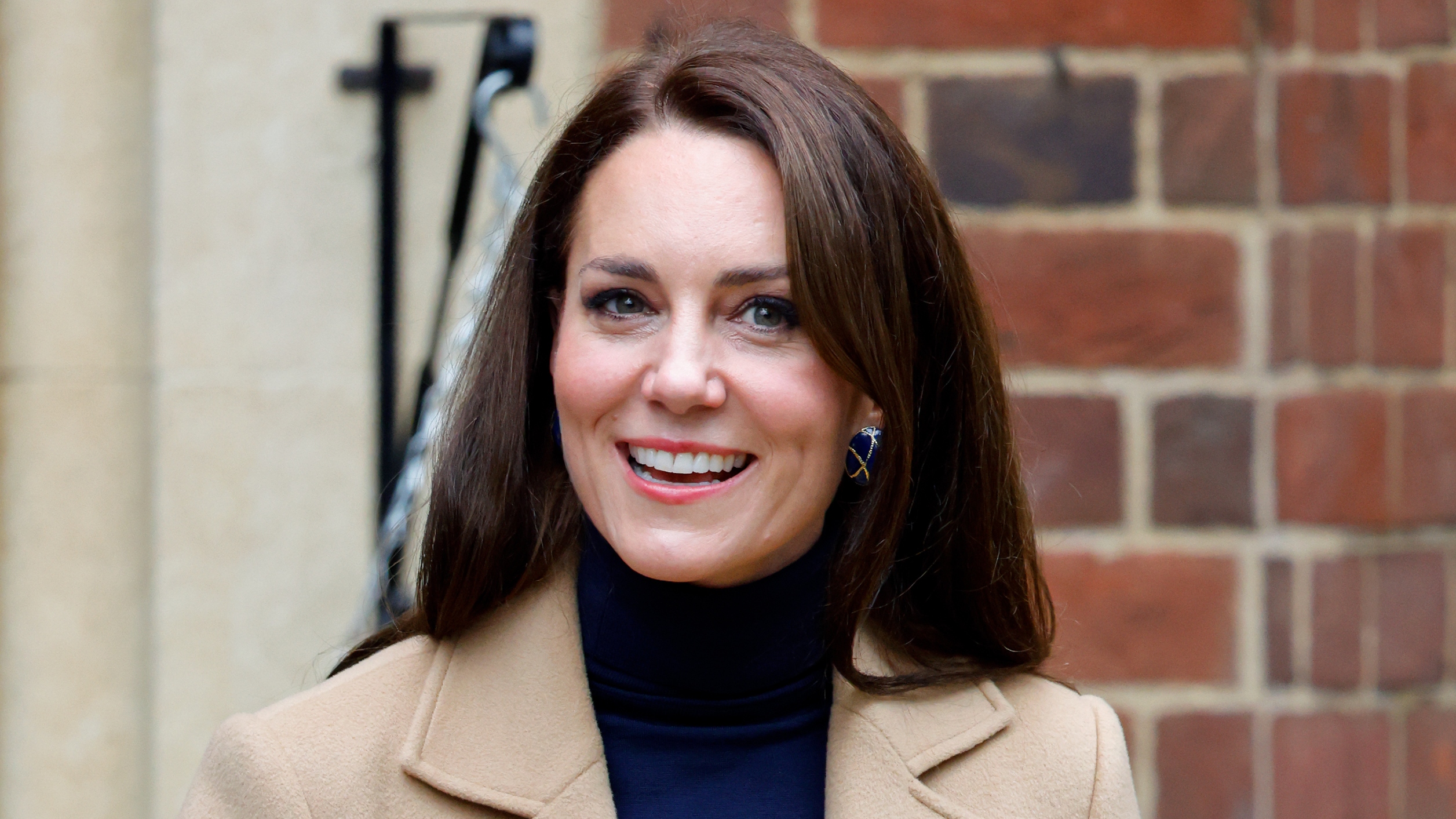 Kate Middleton’s favourite dessert is a decadent classic that she enjoys at cosy Berkshire pub
Kate Middleton’s favourite dessert is a decadent classic that she enjoys at cosy Berkshire pubThe Princess of Wales is said to love an indulgent British dessert and Prince William seemingly just confirmed it's her 'favourite'
By Emma Shacklock Published
